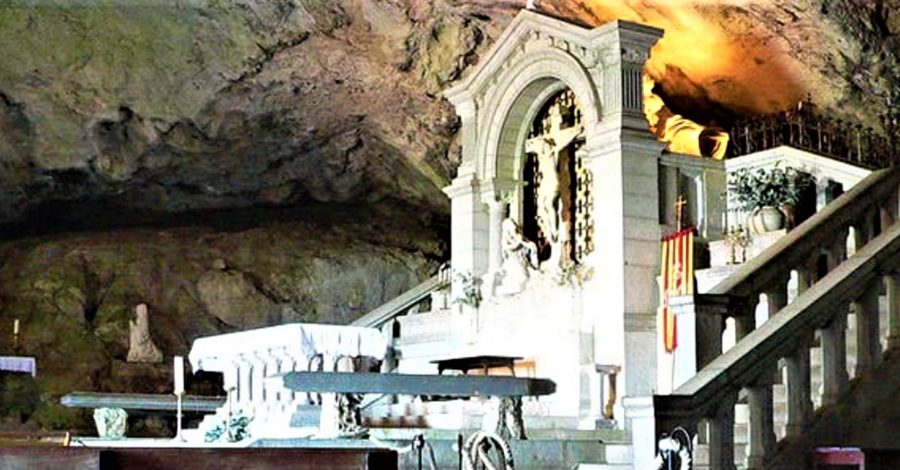 Mary Magdalene was a disciple of Jesus. Her early life is veiled in mystery. Though the sole woman among Christ’s band of disciples, she is at the very least of equal stature with rest of the Apostles, and it has been speculated she was closer to Jesus than any of the others. As documented in the Gospels, she witnessed Christ’s crucifixion, burial, and resurrection. Various scholars have proposed that Mary was a significant force in early Christianity.
Mary Magdalene was a disciple of Jesus. Her early life is veiled in mystery. Though the sole woman among Christ’s band of disciples, she is at the very least of equal stature with rest of the Apostles, and it has been speculated she was closer to Jesus than any of the others. As documented in the Gospels, she witnessed Christ’s crucifixion, burial, and resurrection. Various scholars have proposed that Mary was a significant force in early Christianity.
Those claims are debated, but the Church acknowledges that Mary most likely sailed from the Holy Land, to escape persecution and to spread the teachings of Jesus. It is believed she reached the Camargue region of Provence in south of France around 45 AD. There, she lived, taught, and conducted her ministry for about 30 years.
Mary Magdalene is remembered in three sites in Provenance:
 The Church of Saint Mary’s of the Sea, in the city of Saintes-Maries-de-la-Mer, dates from the 9th Century. Mary Magdalene arrived with two other Marys, whose remains are enshrined in the church (in a private chapel). Debates exist as to their exact identities (then, as now, Mary is a common name), but the Church celebrates them as Mary Jacoby and Mary Salome. They were thought to be relatives of Mary, Mother of Jesus. They stayed in Camargue when Mary Magdalene moved north.
The Church of Saint Mary’s of the Sea, in the city of Saintes-Maries-de-la-Mer, dates from the 9th Century. Mary Magdalene arrived with two other Marys, whose remains are enshrined in the church (in a private chapel). Debates exist as to their exact identities (then, as now, Mary is a common name), but the Church celebrates them as Mary Jacoby and Mary Salome. They were thought to be relatives of Mary, Mother of Jesus. They stayed in Camargue when Mary Magdalene moved north.  Large festivals with both a French and Spanish feel are held here each year and they are known for the large number of Gypsies attending. The festivals are held on the two Mary’s saint days, in May and October. Camargue itself is a wonder. It is a marshy, mystical place where wild white horses and black bulls wander alongside migrating flamingos.
Large festivals with both a French and Spanish feel are held here each year and they are known for the large number of Gypsies attending. The festivals are held on the two Mary’s saint days, in May and October. Camargue itself is a wonder. It is a marshy, mystical place where wild white horses and black bulls wander alongside migrating flamingos.
 The Basilica of Saint-Maximin-la Sainte-Baume (in St. Maximan), is a lovely example of Gothic architecture, and a very special sanctuary. It was built upon the spot where it is believed Mary Magdalene’s remains were found in 1279. From the highway below the Basilica rises from the hills in all its splendor. The expressive art and individual chapel areas in the interior give a feeling of privacy and intimacy. The crypt below contains what are believed to be the remains of Mary. Most memorable is Mary’s skull, blackened with age, and enshrined in a golden reliquary, which is paraded through the town each year on her feast day July 22nd.
The Basilica of Saint-Maximin-la Sainte-Baume (in St. Maximan), is a lovely example of Gothic architecture, and a very special sanctuary. It was built upon the spot where it is believed Mary Magdalene’s remains were found in 1279. From the highway below the Basilica rises from the hills in all its splendor. The expressive art and individual chapel areas in the interior give a feeling of privacy and intimacy. The crypt below contains what are believed to be the remains of Mary. Most memorable is Mary’s skull, blackened with age, and enshrined in a golden reliquary, which is paraded through the town each year on her feast day July 22nd.
The Basilica is the Holy Cave of Sainte-Baume, or the cave of Saint Mary Magdalene, where Mary is believed to have retired to a life of solitary contemplation. A church is now in the cave, or grotto. It is a 45-minute hike from the road, through a mountain and an ancient forest. It is a steep hike, but even so is a popular Christian pilgrimage. I visited there in November, and it was crowded even then, but well worth the journey.


Leave a Comment